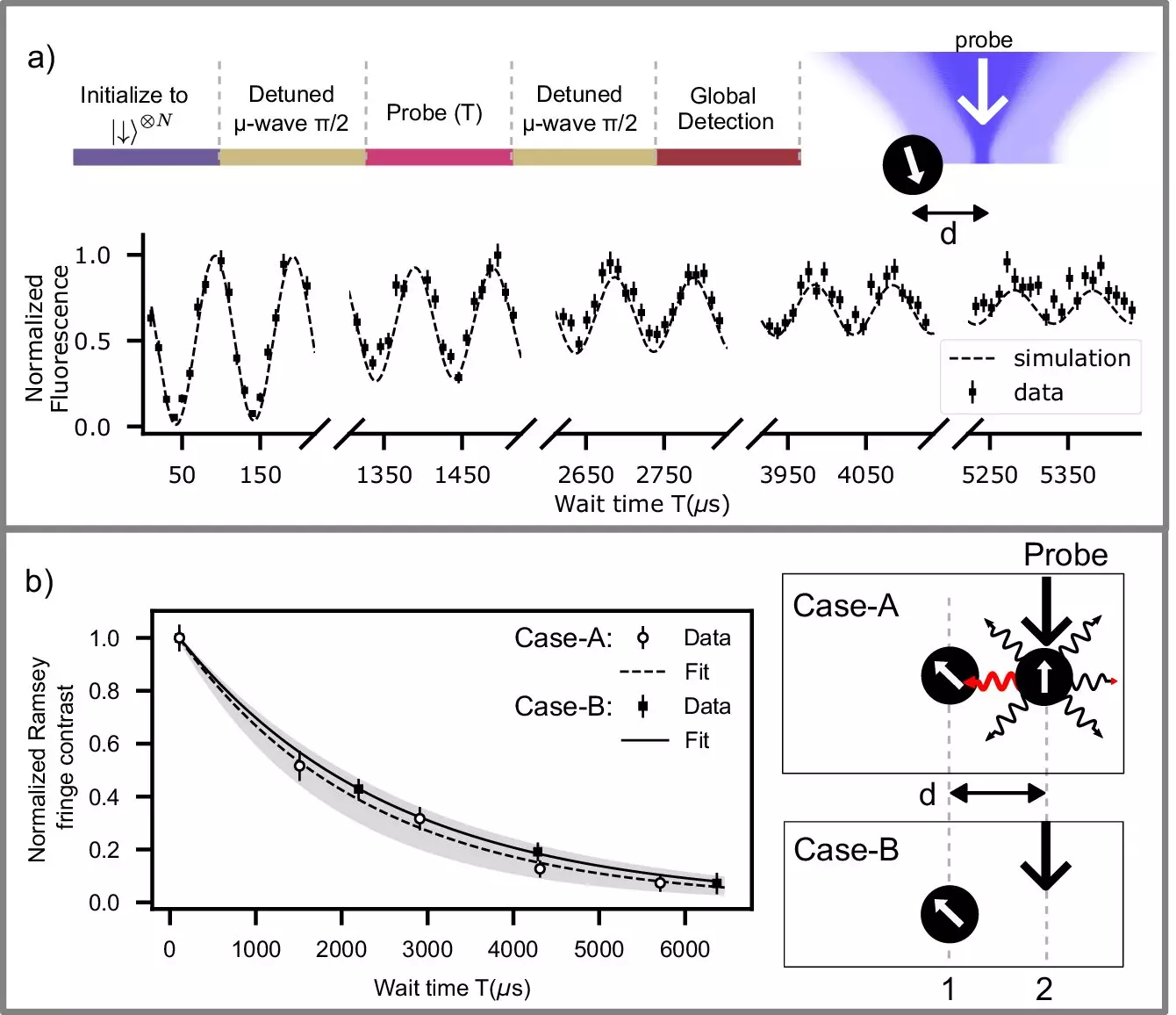Quantum technology is on the brink of transforming computing, cryptography, and our fundamental understanding of physics; however, its promise is constrained by one significant challenge: the inherent fragility of quantum information. Qubits, the building blocks of quantum computing, are particularly sensitive to disturbances, which complicates controlled operations during critical tasks such as measurements and state resets. Recent advancements in quantum information science, particularly by researchers at the University of Waterloo, signal a pivotal step towards overcoming these challenges.
In experiments involving qubits—particularly trapped ions, which are often used due to their representational accuracy—unintended measurements can lead to state collapse. Maintaining the integrity of qubits while manipulating or measuring others has been a long-standing issue in quantum computation, mainly due to the proximity required for efficient interaction among qubits. Traditional methods to mitigate disturbances often involve sacrificing coherence time, introducing additional qubits, or increasing error rates, which ultimately degrade the overall system’s performance.
This duality presents a paradox: while tighter qubit arrangements can enhance computing capabilities, they also heighten the risk of unintended disturbances. Researchers not only require precision in controlling laser operations affecting one qubit but must also protect adjacent qubits, often located mere micrometers apart—a distance thinner than the width of human hair.
In a groundbreaking study published in *Nature Communications*, a team led by Rajibul Islam at the Institute for Quantum Computing successfully demonstrated the ability to measure and reset a trapped ion qubit while preserving the quantum states of nearby qubits—an achievement previously thought to be impossible within such close spatial constraints. Special attention was given to the use of programmable holographic technology alongside traditional ion traps, allowing for unprecedented precision in light manipulation.
The integration of holographic beam shaping with ion trapping marks a notable advancement from their previous work in 2021, showcasing the ability to independently manipulate individual qubits without disrupting their neighbors, thus challenging the prevailing mindset in quantum research. This reframing of possibilities opens new avenues for developing quantum processors poised to enhance the speed of quantum simulations and optimize protocols for error correction.
Central to their achievement is meticulous control over laser parameters. The researchers discovered that by expertly tuning the laser light, they could achieve destruction of state in a target qubit while retaining over 99.9% fidelity in an adjacent “asset” qubit—outpacing traditional expectations. This precision in light control effectively suppressed any unwanted interaction that might lead to state alteration in nearby qubits, mitigating the risks of crosstalk.
During the study, photon scattering—a natural consequence of measuring trapped ion qubits—posed a risk to nearby states, but the team’s advanced holographic techniques successfully navigated this issue. Ensuring that scattered photons do not inadvertently influence adjacent qubits highlights the delicate balance required in quantum measurements and the finesse needed to achieve reliable results.
What does this advancement mean for quantum technology as a whole? The ability to conduct mid-circuit measurements without relocating qubits presents an immense leap forward. Many previous studies necessitated moving qubits several hundreds of micrometers apart—a process not only laborious but also susceptible to introducing noise and delays. The findings showcased by Islam and his team pave the way for more efficient experimental designs and sophisticated quantum processors capable of executing complex operations at greater speeds.
The research team’s holistic approach, combining mid-circuit measurements with controlled laser applications, may prove invaluable in conjunction with existing techniques that prioritize qubit safety. For example, hiding quantum information in states that remain unaffected by measurement lasers is just one way to enhance preservation fidelity further, offering a unified strategy for reducing errors.
As researchers push the borders of what is achievable within quantum frameworks, it is clear that traditional barriers surrounding the fragility of qubits must be met with innovation. Islam’s assertion that the fear of attempting to measure a qubit without impacting others is outdated speaks to the transformative potential of their findings. This shift in perspective allows for a re-examination of numerous quantum processes and may ultimately drive advances that reshape the landscape of quantum computing.
The strides made by the University of Waterloo team not only represent significant scientific advancements but also mark a paradigmatic shift in how researchers approach quantum measurement and preservation. As we stand at the threshold of the quantum era, innovations like these have the potential to redefine our understanding and capabilities within this fascinating domain.


Leave a Reply